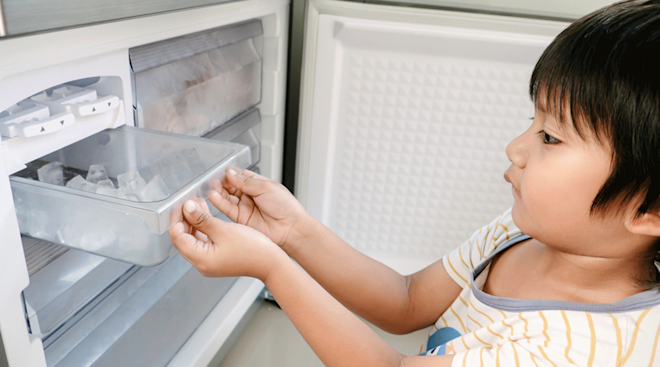7 Ways to Encourage Baby's STEM Learning From the Get-Go
When bonding with baby, you’re likely not thinking about her future career path, but it’s never too early to start, especially when it comes to teaching baby about science, technology, engineering and math (STEM), says GoldieBlox founder Debbie Sterling. (Variations include STEAM—which includes an “A” for art, since creativity is key in these fields—and STREAM, which incorporates an “R” for reading and writing, since those skills are foundational for all learning.)
Fact: STEM-related jobs make up the fastest-growing job sector in the US. Getting baby involved with STEM-based toys and activities now will help develop these interests and skills as your child gets older. This is especially important for girls, “who need empowerment beyond what the traditional pink toy aisle has to offer them,” Sterling says. The number of boys and girls taking STEM-related courses in grades K through 12 is relatively equal, but by the time these students graduate from college, only 30 percent of STEM degrees are awarded to women, with an annual salary gap of approximately $12,600 between genders. “I’m very aware of how much a parent’s admission of a fear of math can influence their children, particularly girls, and that’s one of the biggest roadblocks inhibiting kids from getting into STEM,” Sterling notes.
The best way for parents to introduce their kids to early STEM concepts? Encourage education and exploration around seemingly simple household tasks and activities, Sterling says. Here, she shares her top tips for laying the foundation for a lifetime love of STEM.
Using numbers in simple phrases like “One, two, buckle your shoe” helps babies recognize patterns, which is one of the most important aspects of STEM learning because it helps in predicting outcomes. You can even count hugs and kisses before bed to show how to use numbers.
Songs with repeated phrases like “Old MacDonald Had a Farm” or “Wheels on the Bus” can also help teach young kids about patterns.
Turn the lights off and on in a room and explain what’s happening: “When I flip the switch up, the light goes on. What will happen if I flip it down?” Simple games like this can teach your child about technology and build skills for future scientists.
Discover shapes and sizes everywhere. Offer a square cracker or cut a piece of cheese into a triangle. Ask your child to compare sizes. Use words like smallest, small, medium, big, bigger and biggest to describe food.
When you move baby from one position or place to another, put words to your actions. When you place baby down, say ‘Down you go to play!’ These simple words build the foundation for future math and engineering skills.
Make sure Dad isn’t always the one who fixes the lightbulb or hammers nails to hang a painting. Show your kids that Mom does more than cooking or cleaning—children start to interpret these gender roles at a very young age.
Even if you’re self-conscious about your math skills, don’t let it on. Research shows kids—especially girls—will lose confidence in math at a very young age if they see their mothers intimidated by it. Demonstrate how you use math skills in everyday life, whether it’s calculating the tip for a bill or using fractions while baking.
For more about Debbie Sterling and her toy company Goldieblox, read our exclusive interview here.
Updated February 2018
Please note: The Bump and the materials and information it contains are not intended to, and do not constitute, medical or other health advice or diagnosis and should not be used as such. You should always consult with a qualified physician or health professional about your specific circumstances.
Plus, more from The Bump:
Navigate forward to interact with the calendar and select a date. Press the question mark key to get the keyboard shortcuts for changing dates.




















































